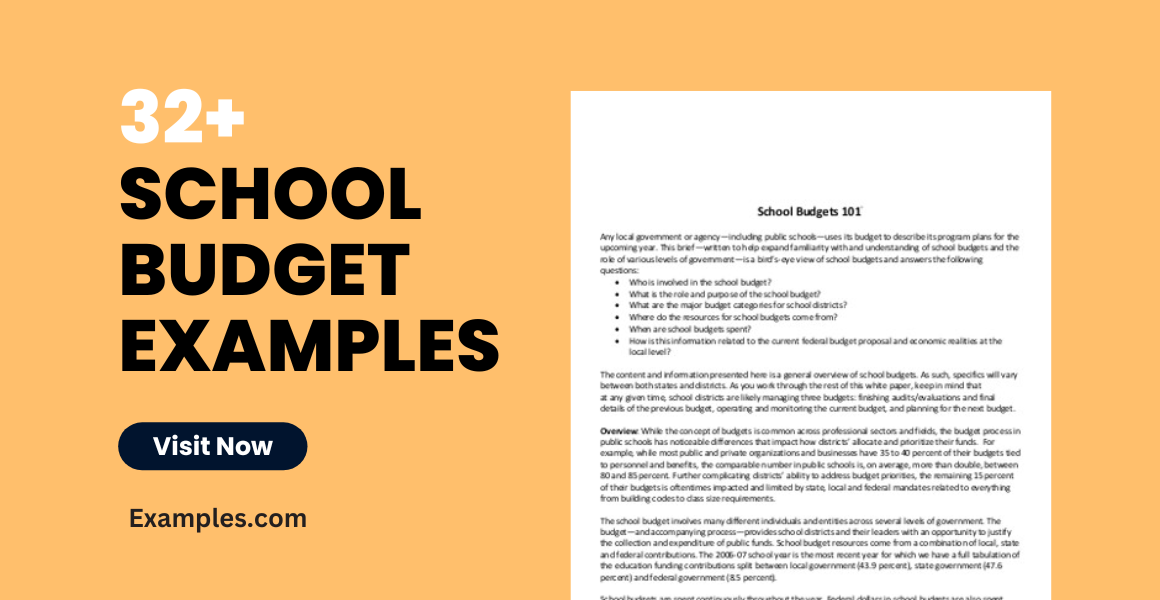

Education is considered by many as an engine to success. Students rely on it for a promising future, and parents submit their children under its strict instruction. But behind its mighty operation lies the reason while it remains active today—funding. School budgets are among a country’s priority, and much of a significant chunk of a nation’s revenue is dedicated to the development of education. A poorly constructed school budget plan can have notable negative impacts, not to mention the barrage of lawsuits that an institution may face. Construct the best budgeting sheet that will help you develop a spotless budgeting process through our school budget examples below.
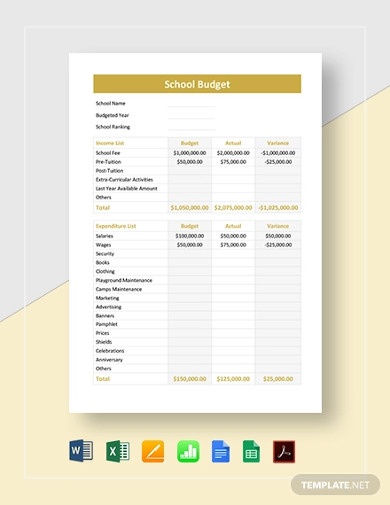
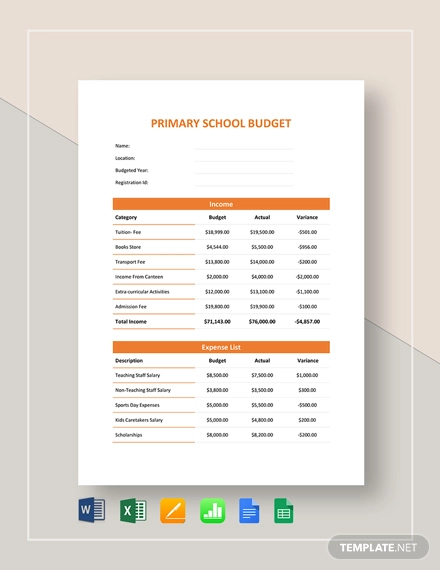
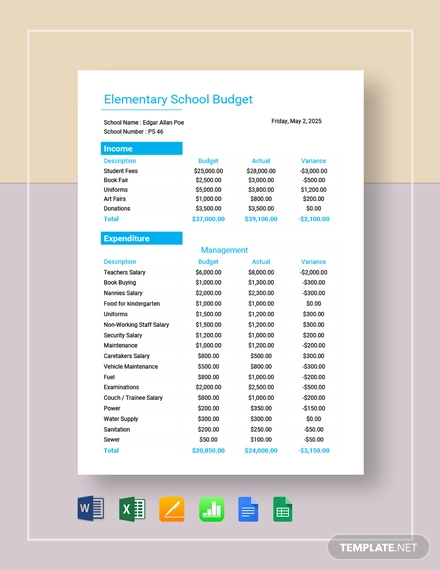
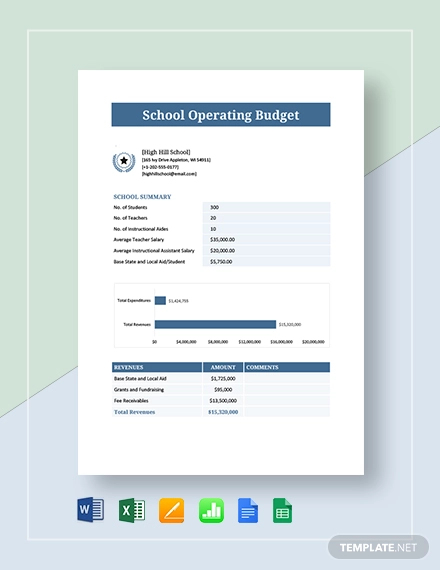
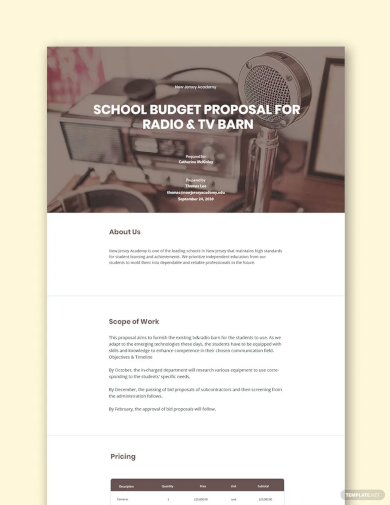
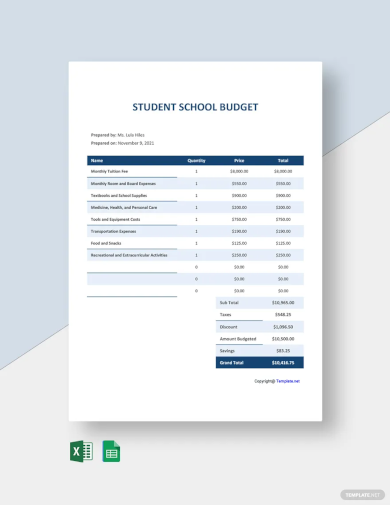
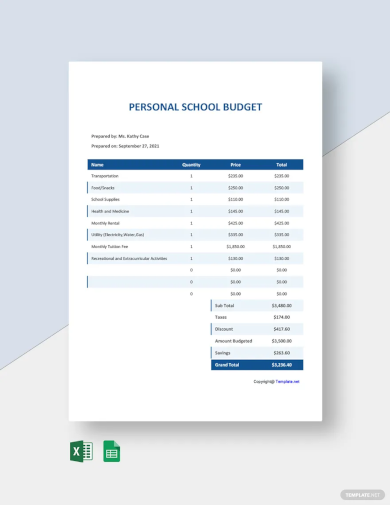
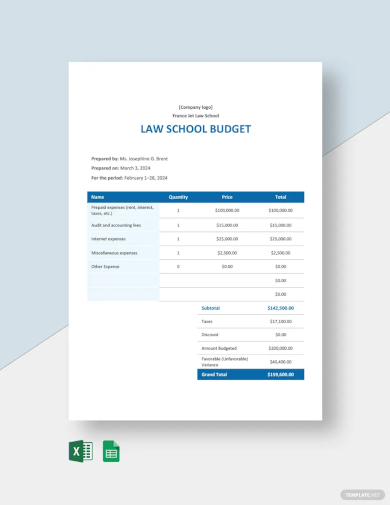
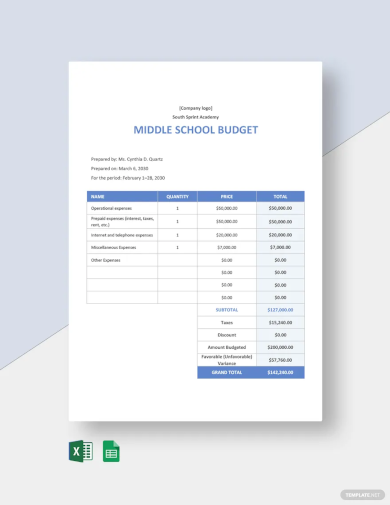
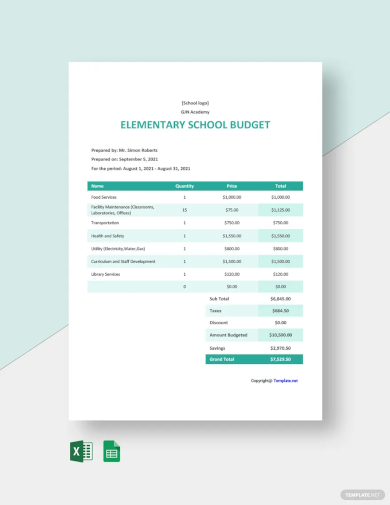
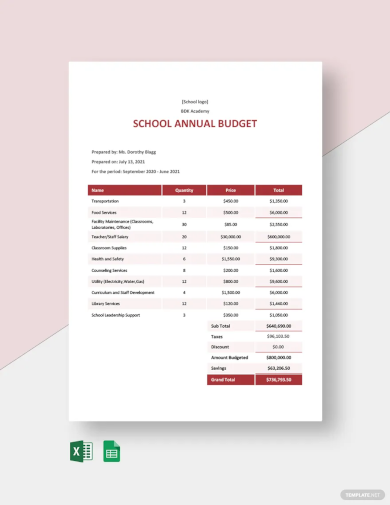
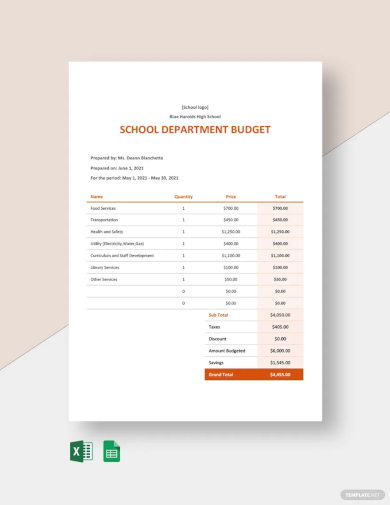
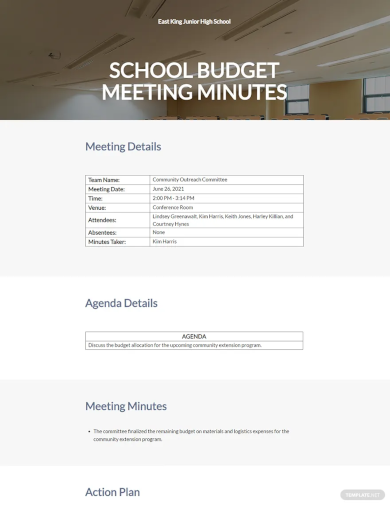
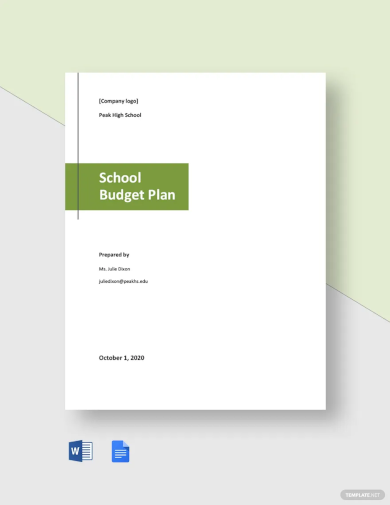

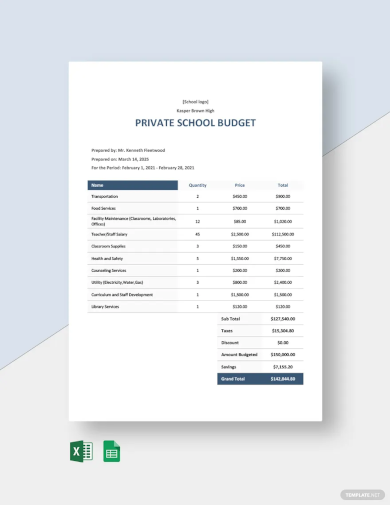
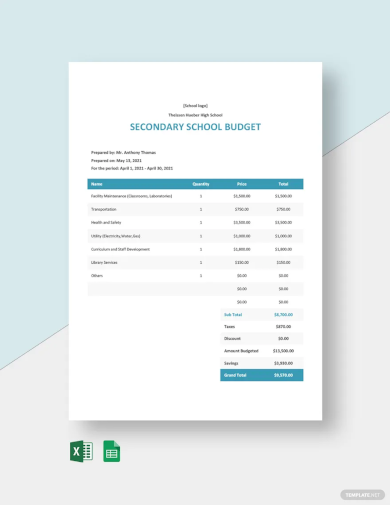
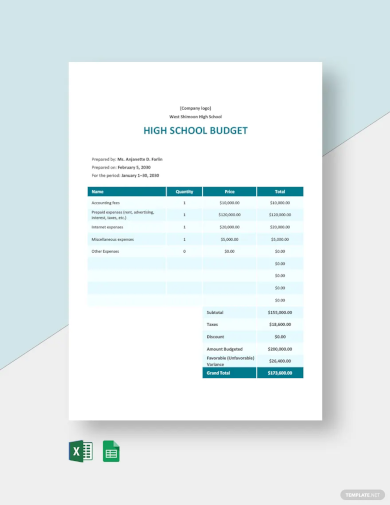
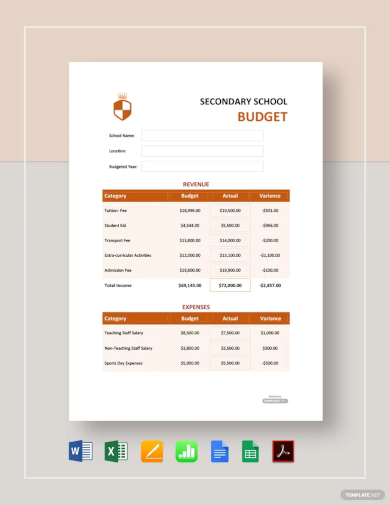
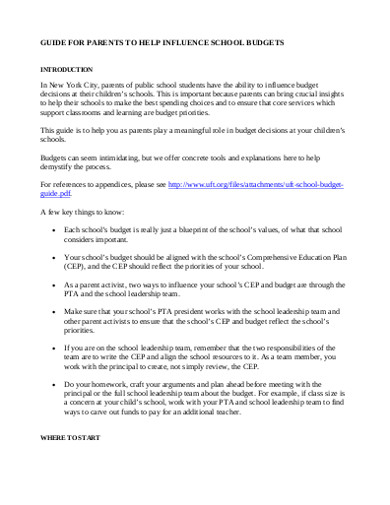
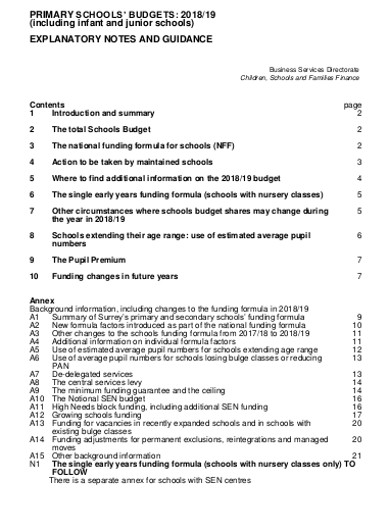
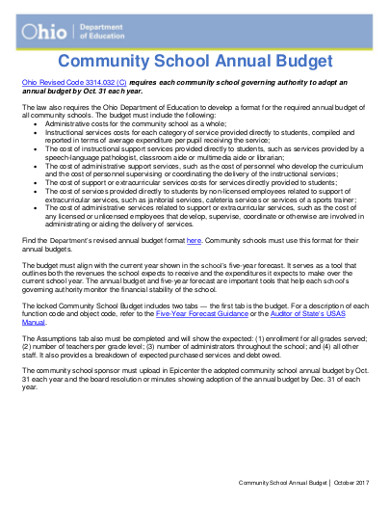
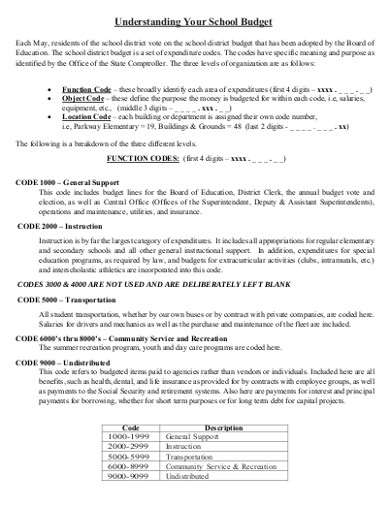
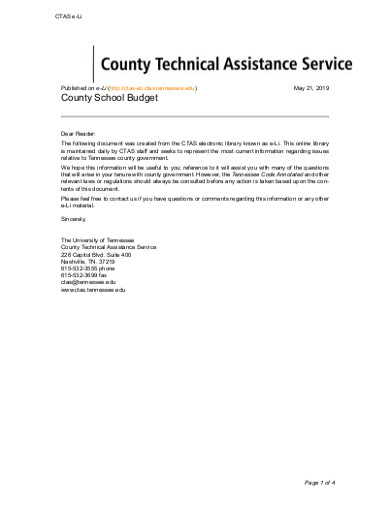
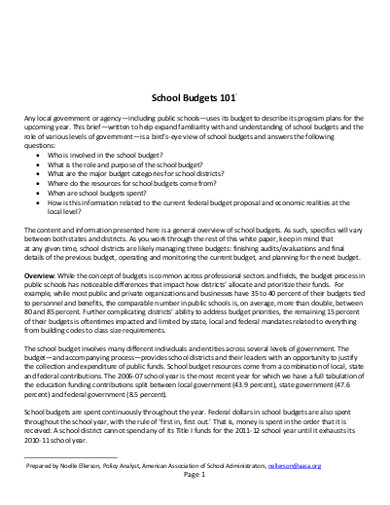
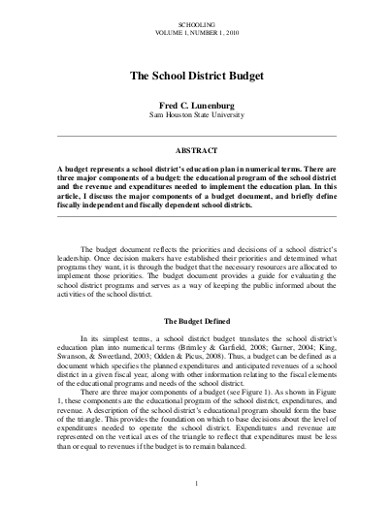
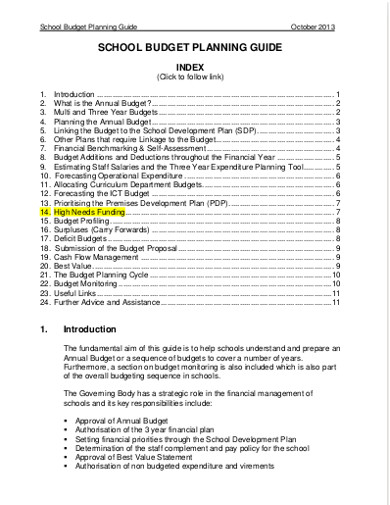 School Budget Planning Guide" />
School Budget Planning Guide" />
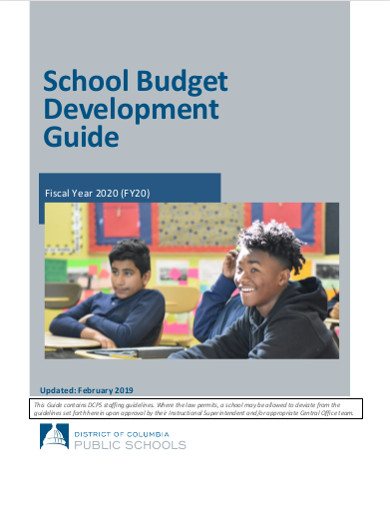
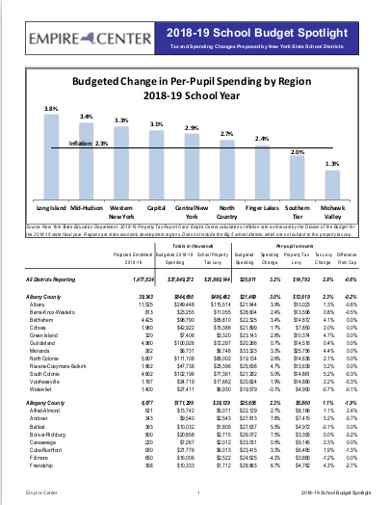

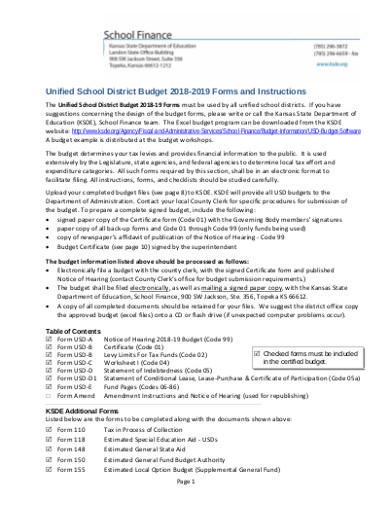
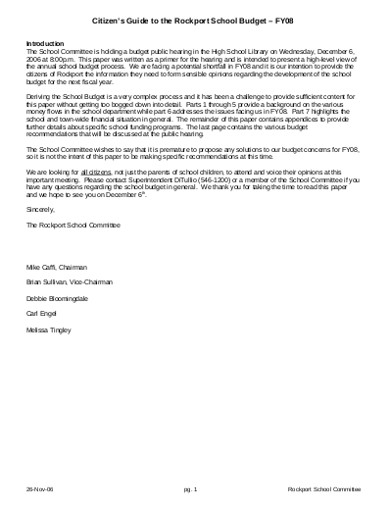
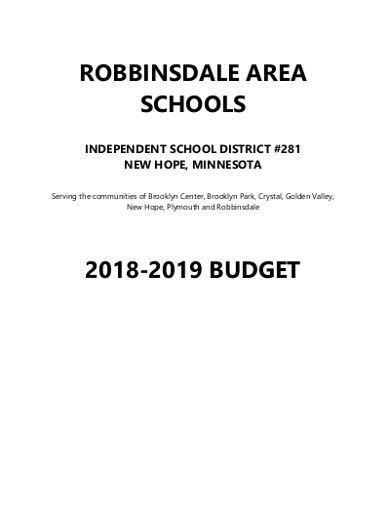
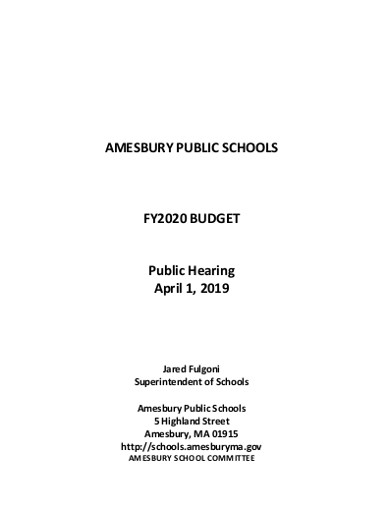
A school budget contains the institution’s upcoming financial plans along with revenue obligations. Whether it’s a public or private school, this outlines their anticipated education plans based on their spending intentions. On a larger scope, it helps school district leaders relay their objectives by implementing programs on the school budgets within their jurisdiction.
According to the US Census Bureau, the government’s spending on public school students rose from $11,763 per pupil in 2016 to $12,201 per pupil in 2017 all over the country. The significant increase of 3.7% is evidence that education is a matter of great concern, and the budget dedicated to this sector should be managed exceptionally.
A school budget failure can greatly affect its operation, which has direct consequences to the students under its wings. While there are much more complex nuances to its budgeting process, here are some tips that you can follow when making a school budget plan:
Budgeting is never an easy task to conquer, but any plan you intend to accomplish needs a goal to keep you motivated. School budgeting is critical to a school’s status. It sets the program in motion and provides the needed instructional materials to facilitate an eduator’s lesson plans. When a school’s financial system crashes, the effects will be evident. Assess your institution’s current status and establish smart goals that fit not only your daily supply consumption but also your developmental needs. This way, you’ll be working towards a result that will significantly benefit your immediate premises.
Whether you’re making a monthly budget or an annual budget, make a comprehensive list of all your needs during a certain period. Rather than writing every single item, group them into similar chunks and label them. Categorizing is better than itemizing because a mix of everything can prove to be confusing. Your label can include maintenance, classroom materials, and events funding, among others. This makes allocation easier because it’s now more convenient to assign budget under these different priorities.
Before jumping right into allocating your budget, it’s best to do a thorough analysis and evaluation. This is an essential plan of action because it allows for a more informed decision. Reflect on your school’s past expenditures and identify which areas you did wrong. Did you spend too much on a middle school dance? Did you fall short in granting a budget increase to provide the high school laboratories with better equipment? Aside from referring to past records, do a cost analysis, and determine whether or not your plans for the year will cost you more than it will benefit you. After discussing everything in a budget meeting, you can now allocate based on your findings.
Without proper implementation, any financial plan is at risk of failing along the way, even with a successful planning procedure. It’s important to practice sustainability in handling a school’s finances. Among the ways of doing this is to impose budget cuts on lucrative matters to make way for a less costly option. You can also practice fund reallocation. Assess your school plans for the year and identify if there are projects that are receiving fair funding but only have few demands. You can take a part of their budget and allocate it to more useful agendas.
According to the American Association of School Administrators, the funds for a school fund comes from the combined local, state, and federal contributions.
These are some of the major budget categories in schools:
The common types of budget are zero-based, activity-based, incremental, and value proposition.
Education deserves all the support it can get. Learned individuals have proven to be a nation’s backbone. They are the ones who pioneer progress and helps a country develop into a massive success. School budgeting is an integral part of any learning institution’s procedure because it defines how their system works and what materials they can provide for their learners. Start your budgeting plan with a reliable tool using our school budget templates. Download now!